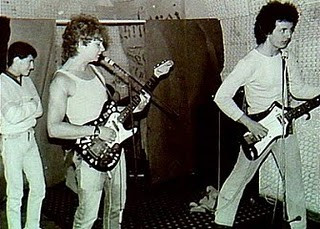Radegast (2)
Настоящее имя: Radegast (2)
Об исполнителе:
Czech Hardcore/Punk band. Active from 1982 to 1992. Sometime in 1982, three young punx under the influence of early American hardcore bands like Minor Threat, Youth Brigade, Battalion of Saints and Poison Idea composed their first songs and slowly the first Czech hardcore band Radegast originated. This primary lineup consisted of Milan Jonsta on guitar and vocals, Jaroslav Sonek on drums and Miroslav Stanek on bass, and the band started to play shows. The first lineup changes occured in 1984, when Jiri Bobes took over on bass, Pavel Kaniok on drums, and Dana Kalousova joined on vocals (she sang together with Milan). With this line-up, Radegast attempted to play out again, but the gigs were often shut down by the police. The first studio demo was recorded in 1986 and released on the bassplayer's label Rytmicka Mladez. These songs mapped the early era of the band and it is rough, violent stuff; short songs with aggressive female vocals and strong distorted guitar. Soon after the demo was recorded, Dana and Pavel left Radegast, rendering the band temporarily inactive. At last they found a new drummer and the band was once again a three-piece: Milan Jonsta on guitar and vocal, Jiri Proks on bass and Josef Jano on drums. Radegast played several great shows in this period, most memorable of which was the 1988 gig with H.N.F., where the audience was more cops than punx... Radegast The second demo was recorded in 1989 and was also released on Rytmicka Mladez label. Once again, speed and intensity were one hundred percent, and the band incorporated interesting basslines and classic old school guitar solos. This formation of the band was influenced by groups like early C.O.C., Napalm Death, Cryptic Slaughter, Wehrmacht and later Wretched. Lyrics spoke of the situation in 1980's Czechoslovakia. Radegast made their first appearance on vinyl with their six-song contribution to the Fuck Off Major Labels compilation LP, which was intended as a reply to production and practices of labels like Multisonic and Monitor. These tracks were showed an improvement in recording quality from the demo sessions, but at the same time lacked the roughness and ferociousness of the old recordings. That same year Radegast released an LP themselves called Otravena Generace (which included rerecorded versions of the demo songs), but this record was also slightly worse than their older stuff. In 1992 shortly after the LP was released, Radegast broke up and the members eventually moved on.




